This was published 4 years ago
Seven of the best places to see the Southern Lights, Aurora Australis
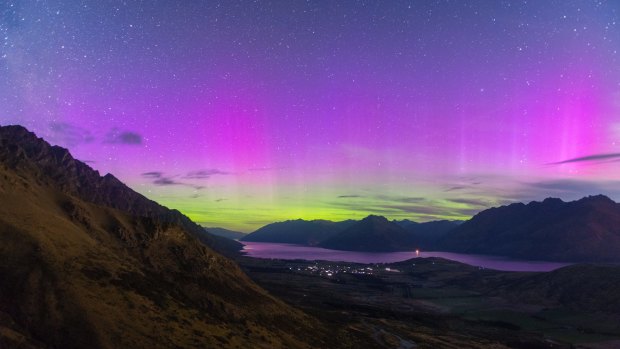
Southern Lights light up New Zealand's night sky.Credit: Getty
One of the globe's biggest natural events is poised to unfold – and you don't need a long-haul ticket to see it.
Sheets of iridescent green, waves of shimmering pink; the southern hemisphere's Aurora Australis is emerging from its slumber to put on a show in the coming years. That's happy news for those of us who've had to put on ice our plans for the long, expensive journey to Scandinavia or North America to see the Southern Lights' northern sister, the Aurora Borealis.
"We're just coming out of solar minimum, building up to a solar maximus, so we can expect to see increasing solar activity to peak in the next three or four years," forecasts Tasmanian aurora watcher Margaret Sonnemann, who instigated what's now Australia's biggest online Aurora Australis information group (see facebook.com/groups/auroraaustralis).
The Southern Lights are visible all year round, but the closer you are to the southern magnetic pole, the higher your success rate. While Tasmania and New Zealand are the most obvious locations, Margaret notes that the Southern Lights have been seen as far north as Jervis Bay on the NSW south coast and even Uluru at the peak of a solar maximus. So rig up your tripod, open your lens, and let the dancing lights commence.
HOBART, TASMANIA
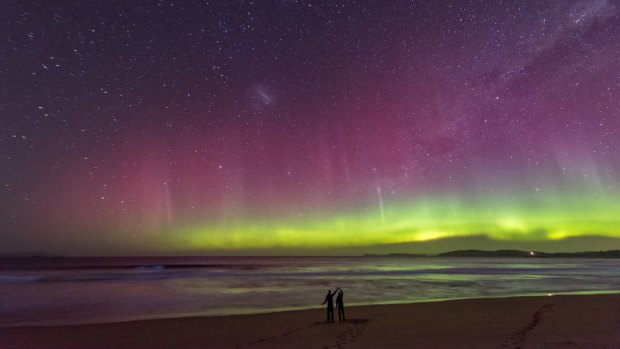
Credit: Getty
For those who don't like to stray too far from the city lights, you need only leave the outskirts of our most southerly capital to spy the Southern Lights. "Often, they'll appear as a white glow, like the lights of a distant town, then you realise you're looking at the sea, and there's nothing else out there," says Margaret Sonnermann. Her top spots include Goat Bluff lookout, 30 minutes' from the CBD on the South Arm Peninsula, as well as the eastern end of Seven Mile Beach, near Hobart Airport. "And obviously, kunanyi /Mount Wellington, but it can be so cold and windy up there," says the Tassie local. See discovertasmania.com.au
WILSONS PROMONTORY, VICTORIA
A long figure pointed toward Tasmania, no roads mar the wilderness of the Southern Prom, and there's nothing but the dark waters of Bass Strait ahead, lit only by flurries of bioluminescent sea creatures and the odd oil rig. Hikers can pitch a tent at the walk-in Roaring Meg campsite or go fancy with a stay at Wilsons Promontory Lightstation, built in 1859 and reached only by a scenic, 20 kilometre hike from Tidal River Village. From here, add a walk down to South Point, the most southerly point on mainland Australia. Alternatively, you could hire a cosy cottage at nearby Walkerville, and set up your viewing spot on its beach. Stays in the lightstation cottages cost from $149.70, parkstay.vic.gov.au. See visitgippsland.com.au, facebook.com/groups
IN THE AURORA ZONE
Soar through the aurora on a privately chartered Qantas Boeing 787-9 Dreamliner packed with astronomers. Chimu Adventures has scheduled six flights in April and May 2021 to fly over the Southern Ocean to latitudes of 62 degrees south. Led by astronomer Dr Ian Griffin, who is also director of the Otago Museum in Dunedin, the team includes an astro-photographer, to help take your photos from muzzy to marvellous along the flight path toward Antarctica. Both business and economy class seats get a running commentary of the planets and constellations visible, and there's a seat-swapping system in place to rein in the window hogs in all but the limited-view Economy seats. Flights depart early evening, to arrive home the next morning. This being nature, the Southern Lights don't appear on command, but Chimu gives an enthusiastic 95 per cent chance of seeing them. From $1295 a person, chimuadventures.com
CRADLE MOUNTAIN, TASMANIA
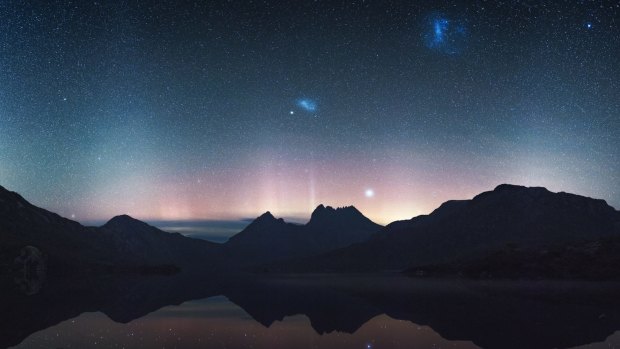
Credit: Getty
The hero shot for aurora photographers is the lights of the Aurora Australis reflected in the calm waters of Dove Lake, says Margaret Sonnemann. For those not up for the hike, the Dove Lake carpark is no shabby second option. Looking for an alternative icon-meets-aurora shot? Just west of Stanley, in the north-west, photographers have managed to catch auroras above the dramatic Stanley Nut, and also the Hazards, the jagged mountain range on the Freycinet Peninsula. If rain sontinues to dog your attempts, the town of Ross, half-way between Hobart and Launceston, is renowned not only for its convict-era Female Factory, but also for having the lowest rainfall in the state and little light pollution. See discovertasmania.com.au
DUNEDIN, NEW ZEALAND
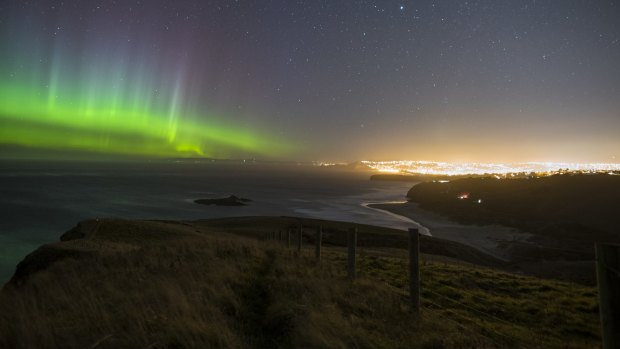
Credit: Hayden Parsons
The Aurora Australis can be seen all year round; while summer watchers should budget on an all-nighter into the wee hours of the early morning, the long winter nights make for darker skies and more hours to play with. The coastal city faces due south, with an uninterrupted view of the horizon – perfect aurora-viewing conditions. Committed to minimising light pollution, Dunedin is replacing all its street lights with low light-polluting LEDS, for even better viewing conditions. On the Otago peninsula's coastline, local aurora watchers' prime locations include Sandfly Bay, Second Beach in nearby St Clair and Hoopers Inlet, where nights ring with birdcall. Follow auroraalert.otago.ac.nz to help plan your aurora-watching activities, see DunedinNZ.com
AOTEA/GREAT BARRIER ISLAND, NEW ZEALAND
The forests and beaches of New Zealand's third-largest island lure hikers and divers, but it's also the site of the country's first Dark Sky Sanctuary, making Great Barrier Island a hot stop on the trail of astro-tourists. Only 30 minutes' flight or a 4½ -hour ferry ride from downtown Auckland, leave the light behind to camp or bunker down in an eco-lodge for a restorative immersion in nature. The whole island is off-grid, and set amidst the treetops. Le Cabanon sleeps two in its stylish little eco-cabin. From A$155 a night, greatbarrierislandtourism.co.nz
RAKIURA/STEWART ISLAND, NEW ZEALAND
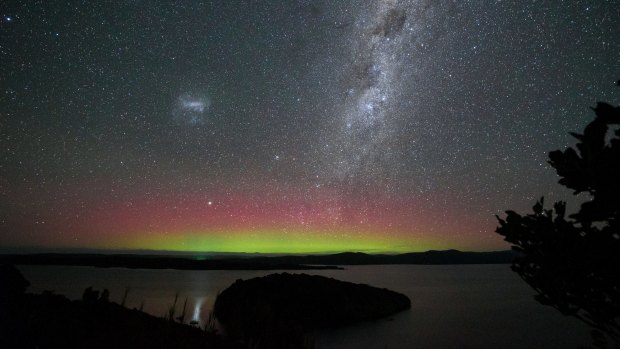
Credit: Rebecca Wilson-Jennings
The original Māori name for Stewart Island shows you're in prime aurora country – Rakiura translates to "glowing skies" in English. Almost 90 per cent of New Zealand's most southerly island is national park, and it's also been declared a Dark Sky Sanctuary, so plan your stay when the moon is at its nadir, for best viewing conditions of not only the Southern Lights, but also Magellanic Clouds and the Milky Way. The island is dotted with viewing platforms, including the south-facing Observation Rock, and is connected by ferry from Bluff or a 20-minute flight from Invercargill on the South Island. See stewartisland.co.nz
Sign up for the Traveller newsletter
The latest travel news, tips and inspiration delivered to your inbox. Sign up now.